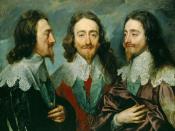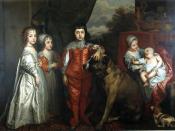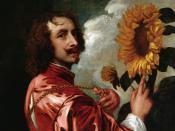Inspired by the sensuous words of contemporary literature in the 16th century, Anthony Van Dyck (1599-1641) produced an inspiring and powerful painting that illustrates the wonderful epic of Rinaldo and Armida. Based on Torquato Tasso's Gerusalemme Libertata, Van Dyck has managed to capture vividly not the primary theme of war in the story, but the account of two characters and their love for one another. Rinaldo and Armida is a rich and vibrant interpretation of a literary epic poem that illustrates mythic characters and expresses their spiritual beauty and ideal love.
Anthony van Dyck was a Flemish artist who migrated to England in 1632 to work for King Charles I who commissioned the majority of his later works. His early work dealt with a great study of the masters such as Rubens and Titian. He completed Rinaldo and Armida in 1629 were he expressed the reoccurring theme of love from most of his religious paintings.
The scene that is seen takes place on an island in the Orontes River. Ronaldo, the Prince of the House of Estee and a warrior on his way to Jerusalem is seduced there by a water nymph and with her "seductive words, golden tresses, and sensuous appearance," he is lured to sleep. This was apparently a planned ambush to murder him by the forces of the underworld with which Armida, niece of the King of Damascus, is in an alliance with. This ambush is to prevent him from ever reaching Jerusalem. As soon as she sees him sleeping peacefully and with the help of Cupid she falls in love and forgets he is the enemy.
A great, vibrant palette, resembling Titian's, enriches the painting. The most prominent of all is the detailed drapery that is intensely blowing in the center of the painting. It...


